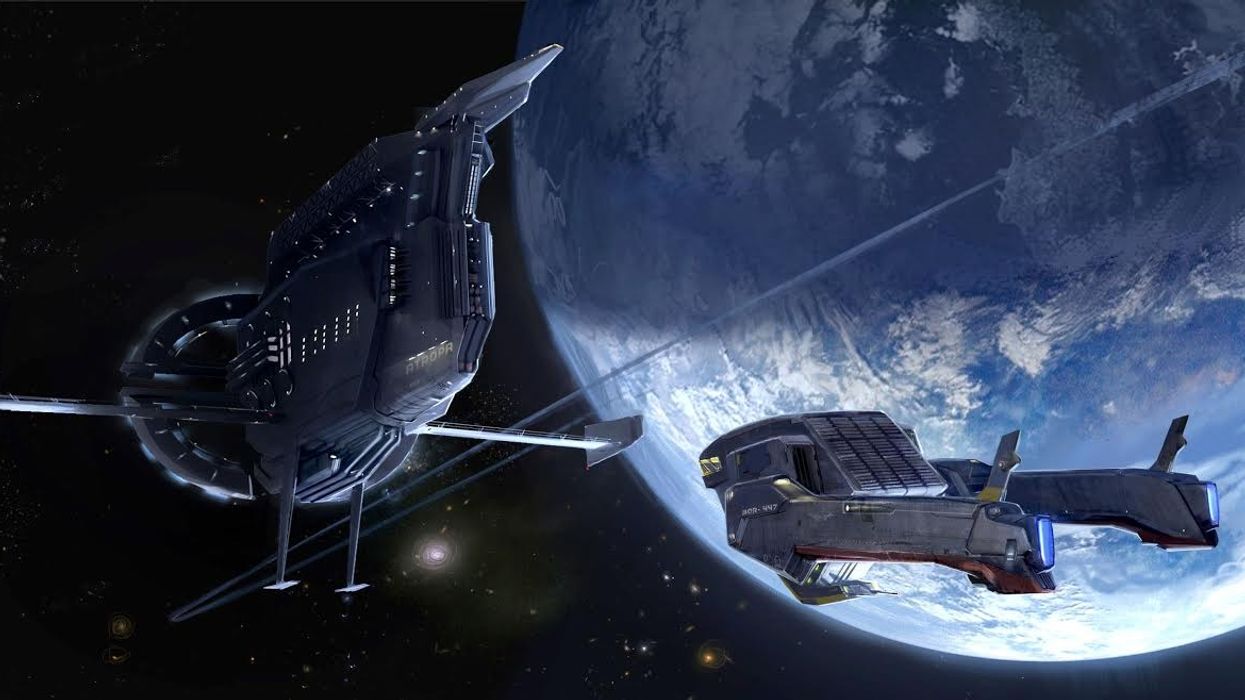'ATROPA' Is a Low Budget Sci-Fi Short You Can't Afford to Miss
Exclusive Interview

Two years ago, I wrote my first article for No Film School. It was the story of HENRi, an ambitious animated short film that finally saw the light of day after an arduous years-long production process. Eli Sasich, the director of that fantastic short film, is now in the process of pre-producing a feature, an even more ambitious sci-fi flick called ATROPA that takes cues from classics of the genre such as Alien and Blade Runner, but also brings to the table Sasich's unique contemporary aesthetic.
With the feature script written, Sasich and company set out to produce a proof of concept short film -- much like our own Ryan Koo did for his forthcoming feature. Despite their extremely limited budget, Sasich and his talented crew managed to produce a short film that is not only incredibly high in production value, but one that perfectly sets the stage for the feature version with its gripping twist ending. Check out ATROPA below.
I had the opportunity to chat with Eli earlier this week, and he shared loads of information about how ATROPA came to life and how he and his team managed to achieve such high production value in spite of their limited budget.

NFS: This short has some fantastic production design work. Did you guys build your own sets and props? How did you achieve such high quality production design with your limited budget?
Eli Sasich: We definitely didn’t have the budget to build our own sets, so we used the standing spaceship set at Laurel Canyon Stages in Arleta, California. It’s a great space, which also means it’s been used in thousands of projects — once you've shot something there, you start to see it everywhere. Our goal was to make it our own, but we couldn’t alter the overall structure of the set, so we utilized lighting and different camera angles to change the look. We embraced the griminess of what existed: it fit our ‘70s and ‘80s design aesthetic perfectly.
NFS: Were there any things that you guys did with this production to minimize costs without sacrificing production value?
ES: The key to keeping the cost down was meticulous planning. Our Producer, Chris Bryant, called in a million favors, and many of our crew were students or recent graduates. We cut on-set costs by using a bunch of production tricks — for example, we only had the budget to build two of the cryosleep tubes, so we used camera angles and editing to make it seem like there were four. Our DP, Greg Cotten, lit the main table and the hologram board from underneath, which allowed us to use them as practical lighting for the scenes and save time. Many of the digital screens throughout both ships were captured in camera – we borrowed six iPads from the crew and looped tech graphics on them. Thankfully, none were damaged during production!
Because we were backed into a corner cost and time-wise, we were challenged to shorten scenes, combine shots, and simplify, simplify, simplify. I think working that way keeps you light on your feet and breeds creative solutions. We ended up with exactly what we needed, nothing more.
NFS: You guys had a few complex VFX/CGI shots with the exteriors of the spaceships and the massive collision at the end. How did you pull those off with your limited budget?
ES: Our VFX team, a worldwide network of people under the supervision of VFX guru Ryan Wieber, worked on a ridiculously tight schedule. Tobias Richter and his company ‘The Light Works' (located in Germany) designed and executed all our exterior space shots in record time. They modeled our CG spaceships from original concept art, and animated them based on detailed storyboards. We collaborated over the phone and via email, which ended up being a very organic process.
We'd like to thank Eli for taking the time to share the process of how ATROPA came to be, and wish him and his team luck as they track down funding for the feature version. Do you guys have any questions about the production of this short film? If so, leave them down in the comments!
















